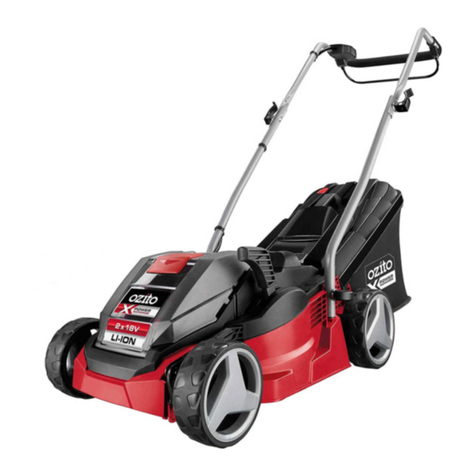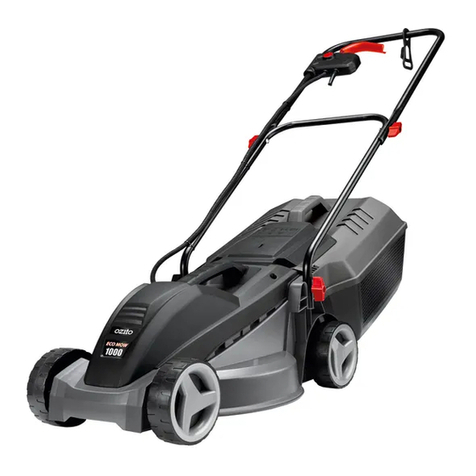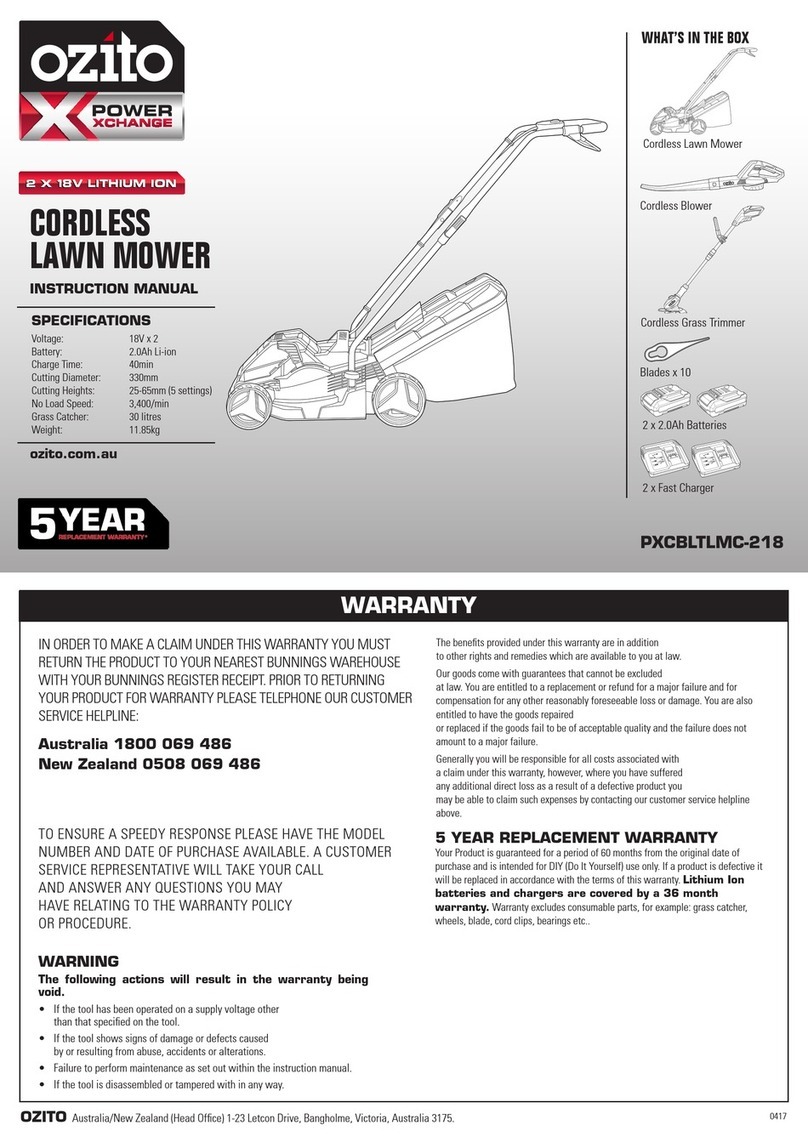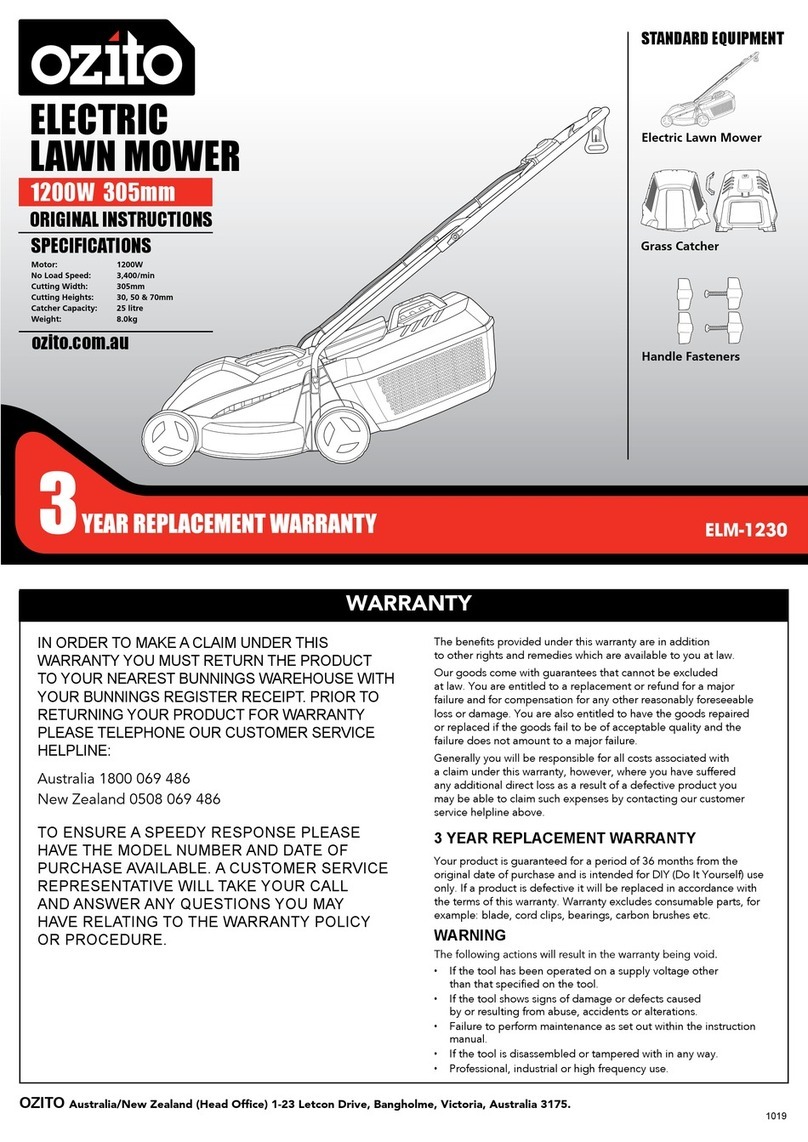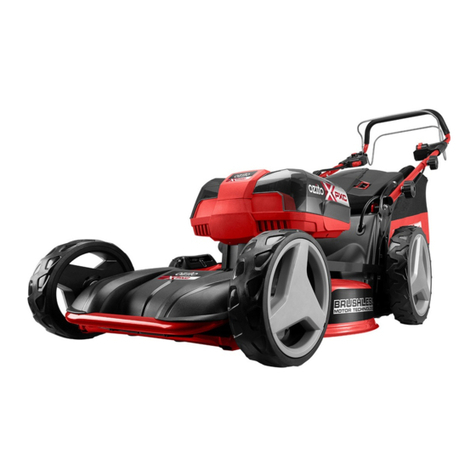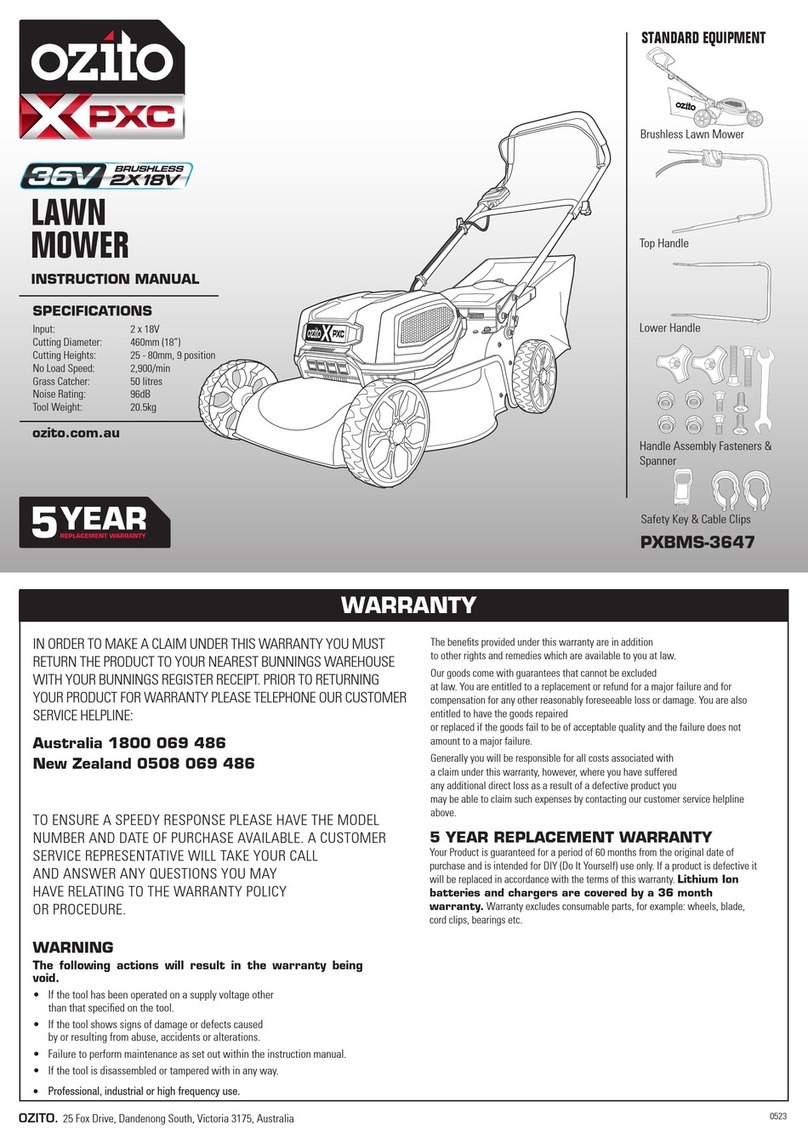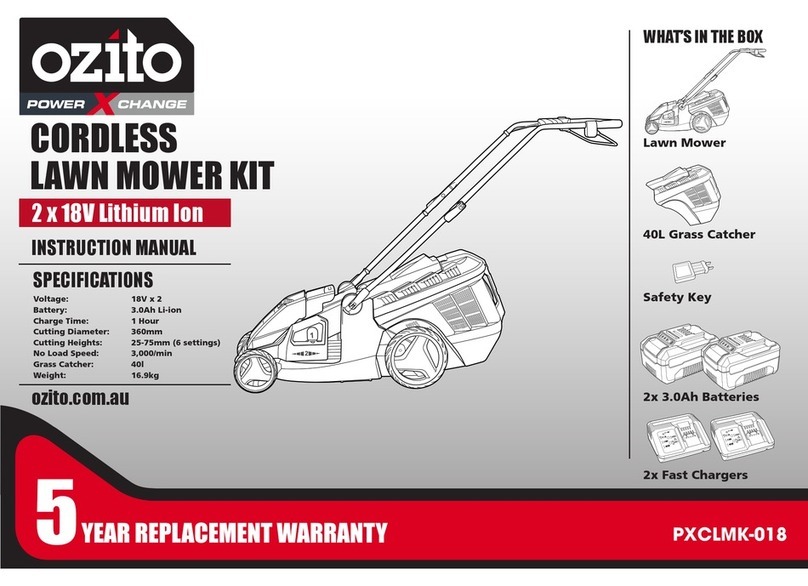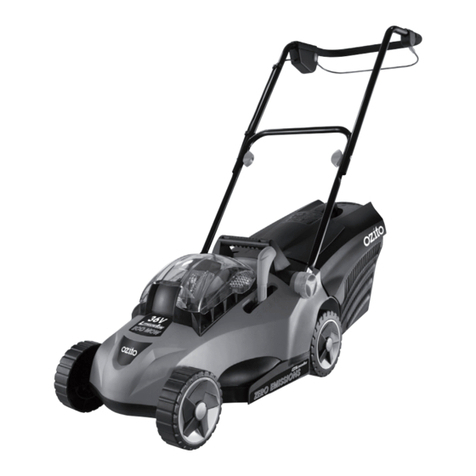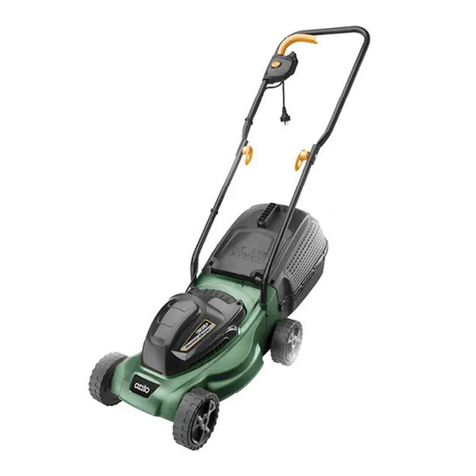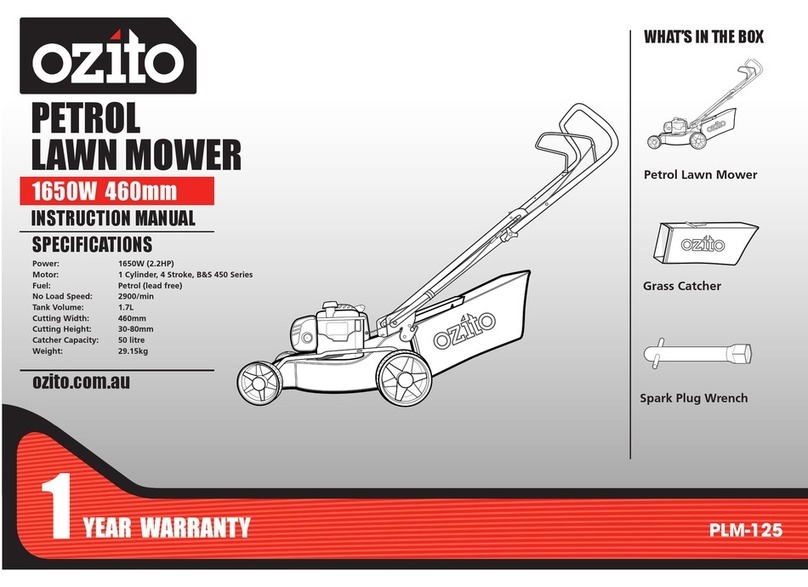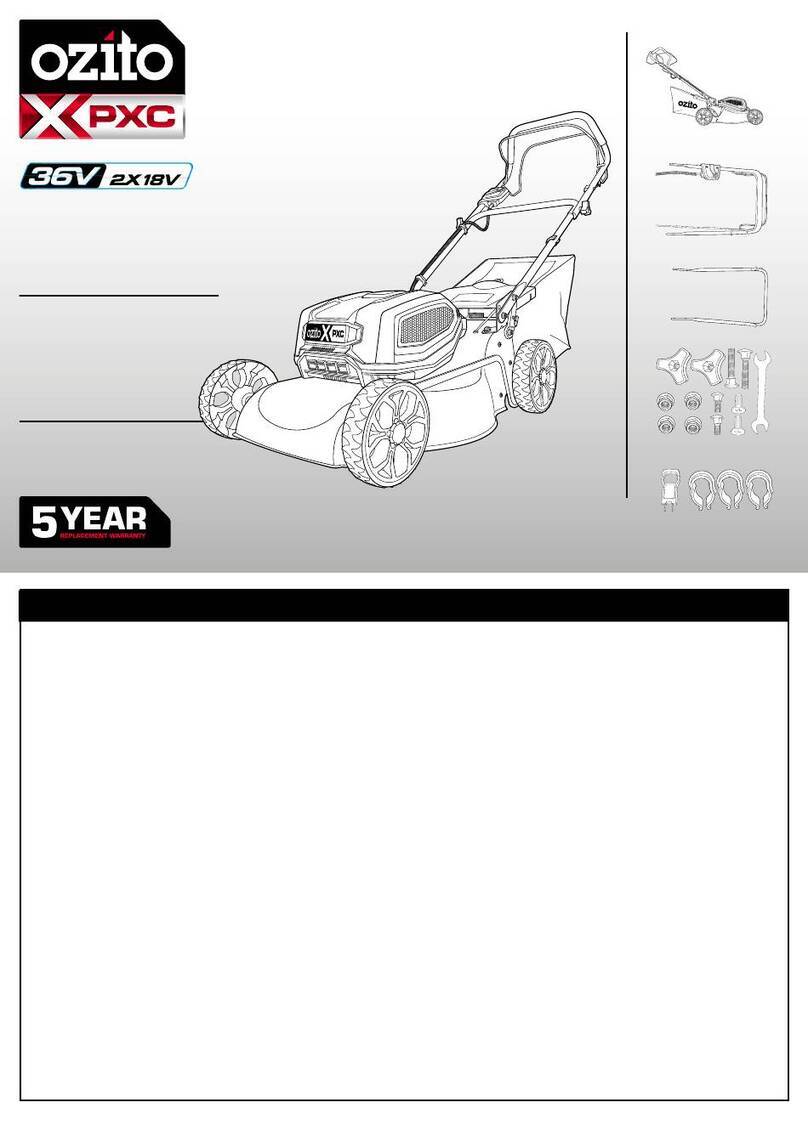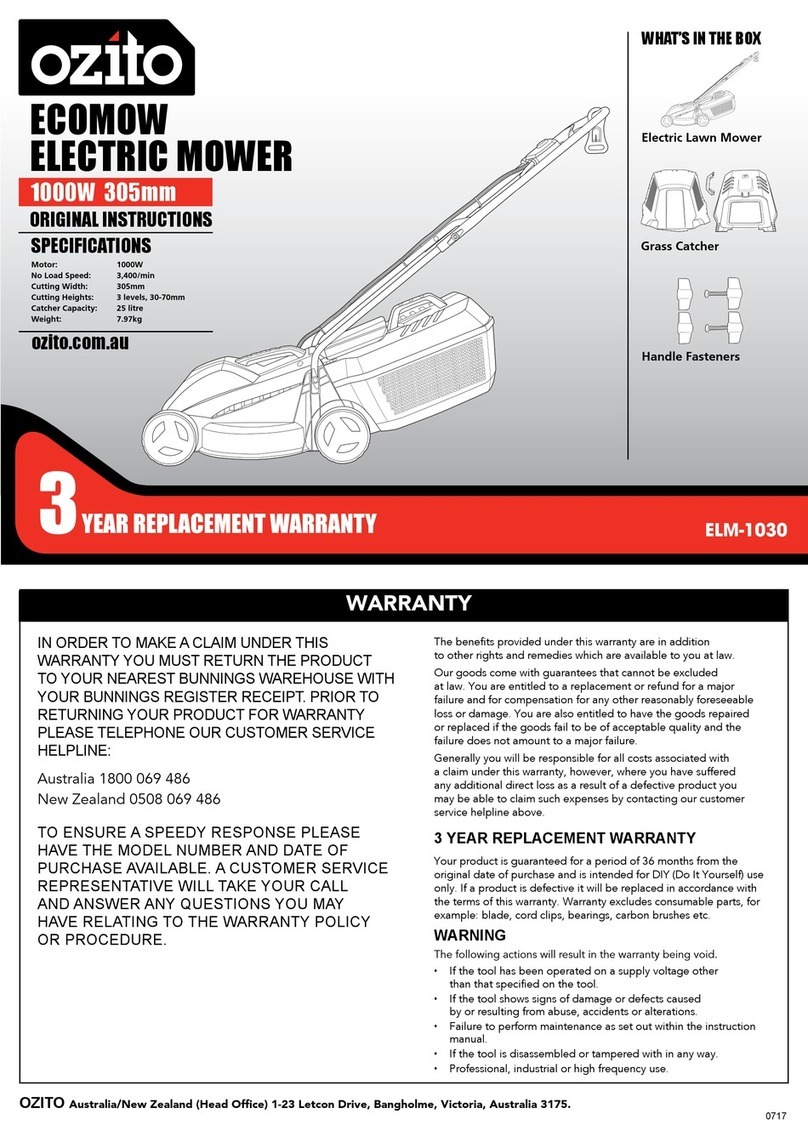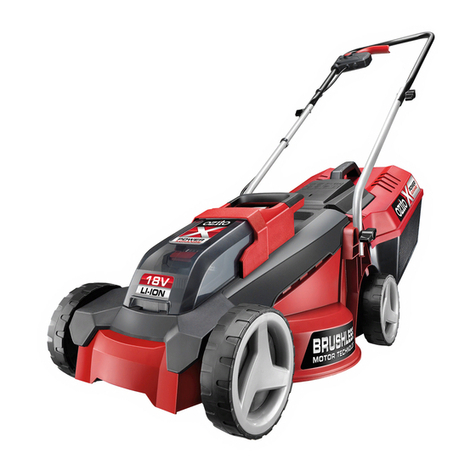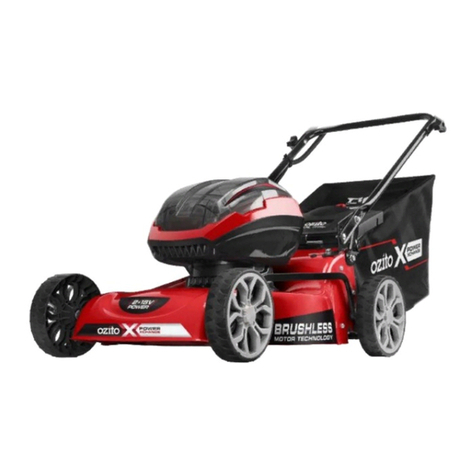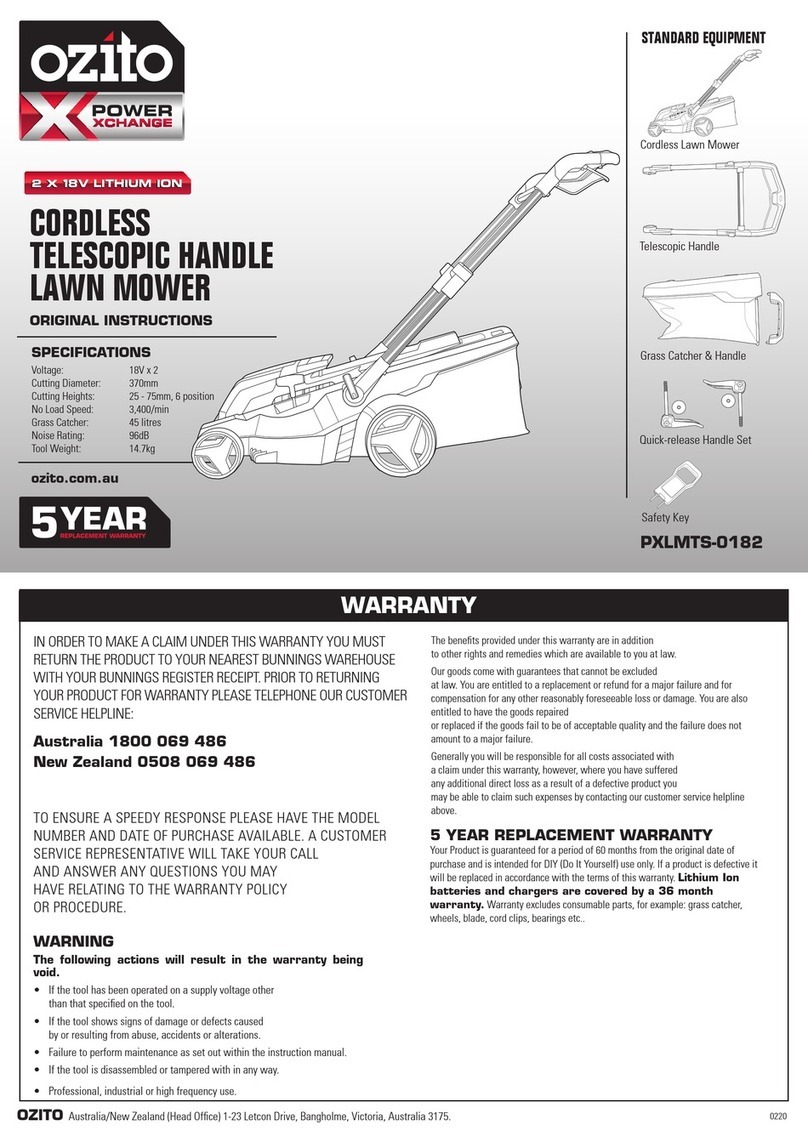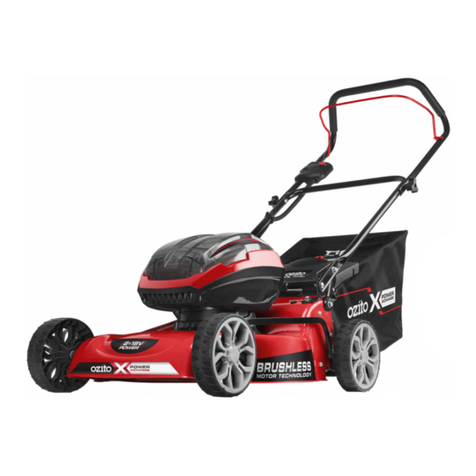
LAWN EDGER SAFETY WARNINGS
WARNING! When using mains-powered tools, basic safety precautions, including
the following, should always be followed to reduce risk of fire, electric shock, personal
injury and material damage.
Read the whole manual carefully and make sure you know how to switch the tool off in an emergency, before operating the tool.
Save these instructions and other documents supplied with this tool for future reference.
The charger has been designed for 230V and 240V only. Always check that the power supply corresponds to the voltage on the rating
plate.
Note: The supply of 230V and 240V on Ozito tools are interchangeable for Australia and New Zealand.
This tools charger is double insulated in therefore no earth wire is required.
If the supply cord is damaged, it must be replaced by an electrician or a power tool repairer in order to avoid a hazard.
Note: Double insulation does not take the place of normal safety precautions when operating this tool. The insulation system is for
added protection against injury resulting from a possible electrical insulation failure within the tool.
The power supply for this products charger should be protected by a residual current device (rated at 30mA or less). A residual current
device reduces the risk of electric shock.
GENERAL POWER TOOL SAFETY WARNINGS
ELECTRICAL SAFETY
WARNING! Read all safety warnings and all instructions. Failure to follow the
warnings and instructions may result in electric shock, re and/or serious injury.
Save all warnings and instructions for future reference. The term “power tool”
in the warnings refers to your mains-operated (corded) power tool or battery-operated
(cordless) power tool.
1. Work area safety
a. Keep work area clean and well lit. Cluttered or dark areas invite accidents.
b. Do not operate power tools in explosive atmospheres, such as in the presence of
flammable liquids, gases or dust. Power tools create sparks which may ignite the dust or fumes.
c. Keep children and bystanders away while operating a power tool. Distractions can cause
you to lose control.
2. Electrical safety
a. Power tool plugs must match the outlet. Never modify the plug in any way. Do not
use any adapter plugs with earthed (grounded) power tools. Unmodied plugs and matching
outlets will reduce risk of electric shock.
b. Avoid body contact with earthed or grounded surfaces, such as pipes, radiators,
ranges and refrigerators. There is an increased risk of electric shock if your body is earthed or grounded.
c. Do not expose power tools to rain or wet conditions. Water entering a power tool will increase
the risk of electric shock.
d. Do not abuse the cord. Never use the cord for carrying, pulling or unplugging the
power tool. Keep cord away from heat, oil, sharp edges or moving parts. Damaged or
entangled cords increase the risk of electric shock.
e. When operating a power tool outdoors, use an extension cord suitable for outdoor
use. Use of a cord suitable for outdoor use reduces the risk of electric shock.
3. Personal safety
a. Stay alert, watch what you are doing and use common sense when operating a
power tool. Do not use a power tool while you are tired or under the influence of
drugs, alcohol or medication. A moment of inattention while operating power tools may result in serious
personal injury.
b. Use personal protective equipment. Always wear eye protection. Protective equipment
such as dust mask, non-skid safety shoes, hard hat, or hearing protection used for appropriate conditions will reduce
personal injuries.
c. Prevent unintentional starting. Ensure the switch is in the off-position before
connecting to power source and/or battery pack, picking up or carrying the tool.
Carrying power tools with your nger on the switch or energising power tools that have the switch on invites accidents.
d. Remove any adjusting key or wrench before turning the power tool on. A wrench or a key
left attached to a rotating part of the power tool may result in personal injury.
e. Do not overreach. Keep proper footing and balance at all times. This enables better control
of the power tool in unexpected situations.
f. Dress properly. Do not wear loose clothing or jewellery. Keep your hair, clothing
and gloves away from moving parts. Loose clothes, jewellery or long hair can be caught in moving parts.
g. If devices are provided for the connection of dust extraction and collection facilities,
ensure these are connected and properly used. Use of dust collection can reduce dust-related
hazards.
4. Power tool use and care
a. Do not force the power tool. Use the correct power tool for your application. The
correct power tool will do the job better and safer at the rate for which it was designed.
b. Do not use the power tool if the switch does not turn it on and off. Any power tool that
cannot be controlled with the switch is dangerous and must be repaired.
c. Disconnect the plug from the power source and/or the battery pack from the
power tool before making any adjustments, changing accessories, or storing power
tools. Such preventive safety measures reduce the risk of starting the power tool accidentally.
d. Store idle power tools out of the reach of children and do not allow persons
unfamiliar with the power tool or these instructions to operate the power tool. Power
tools are dangerous in the hands of untrained users.
e. Maintain power tools. Check for misalignment or binding of moving parts, breakage
of parts and any other condition that may affect the power tool’s operation. If
damaged, have the power tool repaired before use. Many accidents are caused by poorly
maintained power tools.
f. Keep cutting tools sharp and clean. Properly maintained cutting tools with sharp cutting edges are less
likely to bind and are easier to control.
g. Use the power tool, accessories and tool bits etc. in accordance with these
instructions, taking into account the working conditions and the work to be
performed. Use of the power tool for operations different from those intended could result in a hazardous
situation.
5. Battery tool use and care
a. Recharge only with the charger specified by the manufacturer. A charger that is suitable for
one type of battery pack may create a risk of re when used with another battery pack.
b. Use power tools only with specifically designated battery packs. Use of any other battery
packs may create a risk of injury and re.
c. When battery pack is not in use, keep it away from other metal objects, like paper
clips, coins, keys, nails, screws or other small metal objects, that can make a
connection from one terminal to another. Shorting the battery terminals together may cause burns or
a re.
d. Under abusive conditions, liquid may be ejected from the battery; avoid contact. If
contact accidentally occurs, flush with water. If liquid contacts eyes, additionally
seek medical help. Liquid ejected from the battery may cause irritation or burns.
6. Service
a. Have your power tool serviced by a qualified repair person using only identical
replacement parts. This will ensure that the safety of the power tool is maintained.
WARNING! Do not touch rotating parts;
This appliance is not intended for use by persons (including children) with
reduced physical, sensory or mental capabilities, or lack of experience and
knowledge, unless they have been given supervision or instruction concerning use of the
appliance by a person responsible for their safety.
Children should be supervised to ensure that they don’t play with the appliance.
Always wear adequate protective clothing when operating the tool to avoid injuries to
face, eyes, hands, feet, head or hearing.
Use safety glasses or a face shield, high boots or sturdy shoes, long trousers, work
gloves, a hard hat and ear defenders.
Do not start the tool when it is upside down or when it is not in the operating position.
Switch the motor off and remove the plug when the tool is not being used, left
unattended, being cleaned, being moved from one place to another or when the
extension cord is entangled or damaged.
Do not operate the tool near people, especially children or pets. Turn it off if they get too
close. Maintain a safe distance of at least 5m from other people when using the tool.
• Do not expose to moisture
• Do not operate the appliance when barefoot or wearing open toe shoes.
• While operating the appliance, always wear substantial footwear and long trousers.
• Operate the appliance only in daylight or in good articial light.
• Avoid operating the appliance in wet grass, where feasible.
• Always be sure of your footing on slopes.
• Walk, never run.
• Always work across the face of slopes, never up and down.
• Exercise extreme caution when changing direction on slopes.
• Do not operate the appliance on excessively steep slopes.
• Use extreme caution when reversing or pulling the appliance towards you.
• Stop the rotating parts if the appliance has to be tilted for transportation. Do not operate
the cutting means when crossing surfaces other than grass, and when transporting the
appliance to and from the working area.
• Never operate the appliance with defective guards or shields, or without safety devices,
for example deectors and/or catchers in place.
• Switch on the motor according to instructions and with feet well away from rotating
parts.
• Do not tilt appliance when switching on the motor, except if the appliance has to be
tilted for starting. In this case, do not tilt it more than absolutely necessary and lift only
the part which is away from the operator. Always ensure that both hands are in the
operating position before returning the appliance to the ground.
• Do not put hands or feet near or under rotating parts.
• For rotary appliances keep clear of the discharge opening at all times.
• Never pick up or carry an appliance while the motor is running.
• Pull the plug from the socket:
- whenever you leave the machine;
- before clearing a blockage;
- before checking, cleaning or working on the appliance;
- if the cord is damaged or entangled;
- after striking a foreign object. Inspect the appliance for damage and make repairs as
necessary.
• If the appliance starts to vibrate abnormally, check immediately.

